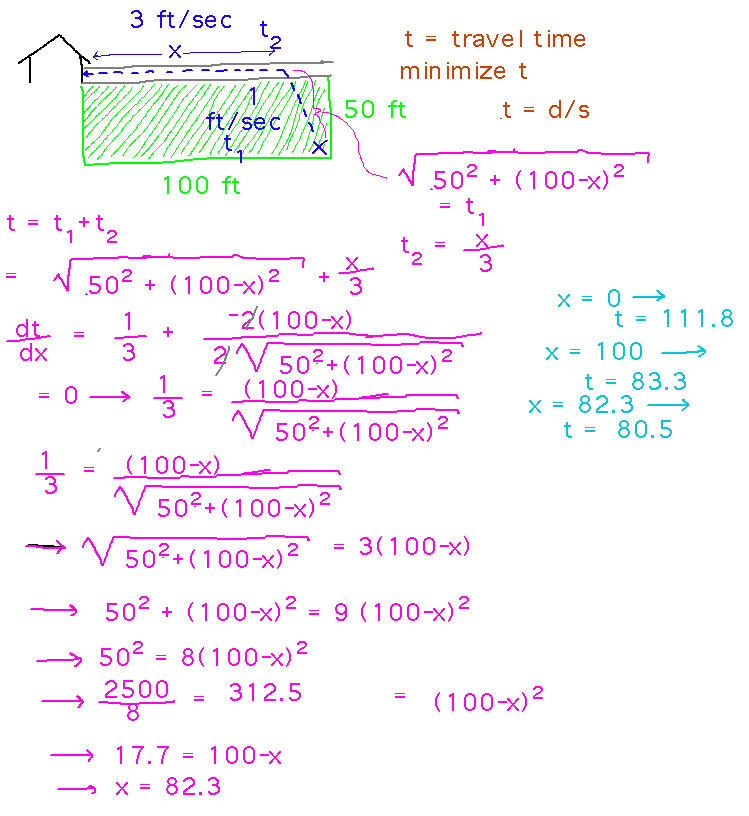
SUNY Geneseo Department of Mathematics
Thursday, October 26 - Monday, October 30
Math 221 05
Fall 2017
Prof. Doug Baldwin
“Introduction to Catastrophe Modeling”
Raymond Cook, AIR Worldwide
Thursday, November 2, 4:00 pm
Newton 203
Extra credit for writing a paragraph on connections you make to the talk.
It’s the time of the semester when they become a scarce resource, so...
Thursday, November 2
It will cover material not tested on the first exam, for example the chain rule, implicit differentiation, related rates, linear approximations, extrema, shapes of curves, limits at infinity and asymptotes, etc.
The rules and format will otherwise be similar to the first exam, especially “open-references, closed-person.”
Section 4.7
Take (or at least imagine taking) a sheet of paper, 8.5 by 11 inches. If you can cut it up and tape the pieces back together any way you like, what’s the largest volume tube you can make?

Eco preserve. Ecological preserves should have a minimal perimeter, because that perimeter is what “foreign” species enter across. If you’re designing a rectangular preserve with area 10 square miles, how long should the sides be to minimize perimeter?
Reading ideas re process for solving optimization problems:

Lawn mower. I somehow manage to finish mowing my lawn in the corner furthest from the shed the lawn mower lives in. If the lawn is a 50 foot by 100 foot rectangle with a driveway along one side, and I can push the mower at a speed of 1 ft/sec on the lawn and 3 ft/sec on the driveway, where should I aim in order to put the lawn mower away quickest?

Buckets. Do bucket manufacturers (or at least the manufacturer of one particular bucket) minimize the amount of plastic they use to make their buckets?
Treat the bucket as a cylinder, and minimize its surface area given a fixed volume. Note that the key difference mathematically between this and the tubes from last time is that surface area now has an r2 term.

Eco preserve revisted. Suppose the preserve has a river along one side, which is impassable to invasive species and so needn’t be counted in the perimeter. What then are the height and width that minimize perimeter?
Optimization is finding extreme values, but with constraints that relate the variables involved and/or restrict the domain.
The process for finding optimum values (see above).
See handout
Calculating area under a curve — integration.
Read section 5.1 for Wednesday, November 1.